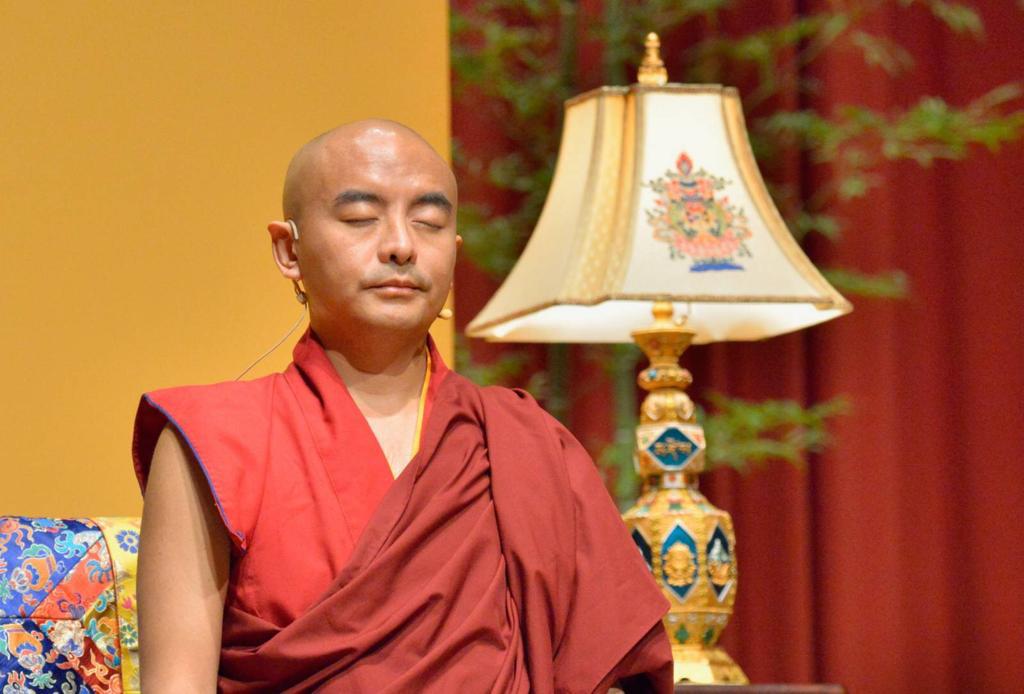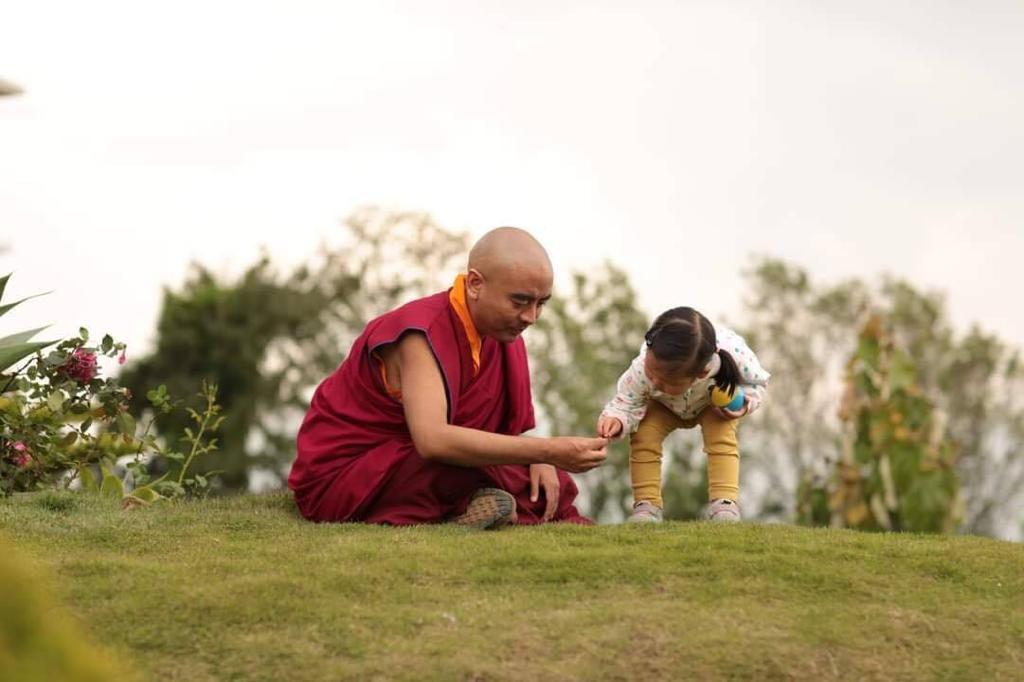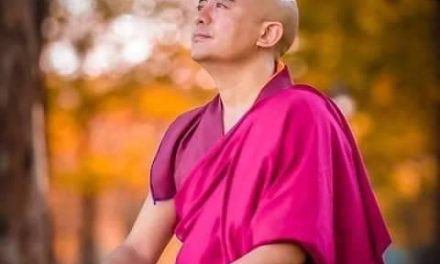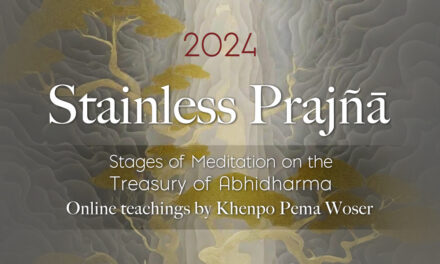
Now the JOL2 is all about the discovering of love and compassion. We already found out in JOL1 that awareness is always with us. Similarly, love and compassion are always with us 24 hours.
This basic innate goodness is existing within us, no matter which cultural background and religious background you are from. It doesn’t matter whether you are meditator or not. Everybody has this innate love and compassion within themselves.
When I was young, I received this teaching from my father, and my father said, “you have all these wonderful qualities; the nature of you, the nature of all beings, the nature of enlightened beings is the same.” At the beginning, I didn’t believe that.
As we practice again and again, we will discover these great qualities within ourselves. So that is the special lineage of this practice.
▍Look for happiness, and avoid suffering, that is the manifestation of love and compassion
Now I have a question for all of you, how many of you want to be happy? How many of you don’t want suffering?
Actually, in our mind, we all want happiness, we don’t want suffering, and that is the manifestation of love and compassion. Love is looking for something good, nice, and meaningful. Compassion means, we don’t want problems, we don’t want to suffer.
When we practice loving kindness and compassion, we need to nurture and expand that feeling. If that feeling is about you wanting to be happy and not wanting to suffer, that is what we call self-kindness, or self-compassion. If you feel others want to be happy and don’t want to suffer, that is love and compassion to others. Both are love and compassion.
▍Recognizing love and compassion, obscurations will be transformed automatically
Love and compassion are always with us, but when negative emotions like anger and aversion arise, do we still have love and compassion?
It’s like we are wearing yellow glasses, so where ever we look, we see yellow. And that problem is because of the glasses, not the eyes. The same thing with love and compassion – they are always there, but there are obscurations—craving, hatred, and ignorance, what we call the negative emotions which obscure our true nature.
When you have hatred, that hatred comes from love and compassion, at the most basic level. You are looking for happiness actually and that is from love. When you think there is an obstacle to happiness, and you don’t like that, you don’t want suffering, the basic level is compassion. But when love and compassion are filtered by ignorance, hatred and craving, it may manifest that you only care about your own happiness and don’t care about others. That’s the negative result.
Here the main practice is, first bring awareness to your innate love and compassion. When you recognize this, you are connecting with reality, then you are free from ignorance. At the same time, when we expand this love and compassion to all beings, then aversion and craving begin to lose their power, then the obscurations are transformed.
▍Back to the real home — our true nature
There is a very famous example from our meditative tradition. One time the Buddha was teaching in India, somebody asked the Buddha, “What is the sign of my basic innate goodness?”
The Buddha said that looking for happiness and not wanting to suffer were signs of our basic innate goodness. Because we always want to go back to our true nature—back to our real home.
Our true nature is with happiness, love, virtue, and all these wonderful qualities. The obstacles and problems which make us suffer are from outside and not in our true nature.
Just like no matter how far the bird goes, it always wants to return to its nest, because that is the real home for the bird.
If we don’t have basic innate goodness, we will not care about self and others. We’ll become robots without minds. Therefore, when we look for happiness and avoid suffering, it means that we have basic innate goodness.

In the Joy of Living Level 2 (JOL2) meditation on “love and compassion”, there are five steps to practice: first, to yourself; second, to someone you like; third, a neutral person; fourth, a difficult person; and fifth, all sentient beings.
It’s more difficult to practice love and compassion with a difficult person in general. But that difficult person who is not easy to get along with usually expands our love and compassion, he/she is our real teacher and friend.
There is a saying, “We cannot practice love and compassion without enemies; we cannot practice patience without enemies.”
In daily life, we will encounter someone who is difficult to deal with. Someone who has different opinions, someone who makes us jealous, or someone looking for trouble. In fact, these are the best opportunities for us to practice love and compassion.
▍Understand that we have something in common with each other
How then to practice love and compassion for a “difficult person”?
The answer is to understand that person. Even though he is a difficult person, he also wants to be happy and doesn’t want to suffer. Now I ask you a question: “When you have hatred, can you control it or not?”
The real situation is when you have strong hatred or strong emotion, you cannot control yourself. Once these emotions arise, they are usually out of control.
Deep down you don’t want to have ignorance, hatred, and fixation, etc., but you cannot control your emotions. That difficult person is also the same as you as he is controlled by these emotions.
▍Story of Kathmandu Mountain
When I was young, my father and I lived in Kathmandu, up on a mountain. Sometimes different groups of people come to my father’s place to learn meditation. One day two men visited who were shouting at each other, and at one point they were beating each other. One of them came to see my father and said, “Please teach me, how can I control my anger?”
My father asked him,” Why were you angry with that person?”
He said, “Because he said bad things about me, and hit me with a stick.”
My father said, “Oh…then that which really hurt you are the words, and the stick, so maybe you should be angry at the stick and the words.”
He said, “Ha-ha, I’m not stupid, I will not hate the stick and the words. What you are saying is stupid logic.”
And my father said, “OK, why? Why are you not angry at the stick and the words?”
He said, “because the words and stick are controlled by him, so I hate him.”
And my father said, “Ok, then in this case, you should hate the negative emotions within that person, because he is controlled by his negative emotions. Just like you, when you have hatred, you don’t have control.”
Finally, after listening to my father’s advice, that person left feeling more relaxed.
Therefore, we need to think of the differences between that person’s emotions and actions. For example, I was naughty when I was young. My mother never said, “you are bad”, she just said “your action was not good”. If you really want to hate, you can hate the emotions and negative actions of that person, but not the person himself.
▍Practice of “love and compassion”
Now we are going to practice “love and compassion” meditation with a difficult person.
[Rinpoche guiding us to meditate]
Please keep your spine loosely straight.
Rest your mind in open awareness first.
Now think of a difficult person in your mind. That person, at the basic level wants to be happy, doesn’t want to suffer, just like you.
But when ignorance comes or if he doesn’t know the real situation very clearly, or he believes wrongly, or he is forced by different circumstances, then that person develops hatred and harmful actions, which even he doesn’t want.
What he wishes is to be happy but what he does is to create the causes of suffering.
The desire and the action have become opposites. It’s like holding a hammer in your hand and hitting your head.
Then recite in your mind:
“May you have happiness and the causes of happiness.
May you be free from suffering and the causes of suffering.”
▍No need to get rid of negative emotions, transform them naturally
Today I will teach you how to transform negative emotions into loving kindness and compassion. Have you ever heard “transforming poison to medicine”? Which is also called “self-antidote” or “self-liberation”.
Let me tell you a story first.
When I was young, I studied at Tai Situ Rinpoche’s Sherabling monastery in India. At that time, Saljay Rinpoche was my three-year retreat teacher. I learned a lot of teachings from him and he was a very nice and kind teacher.
One day, as I was washing my head, some water got inside my ear. Each time I walked I could hear “gili, gili, gulu gulu” (the sound of water inside my ear). I tried many ways to get rid of this water, but nothing seemed to help. It made me very uncomfortable and I told this situation to Saljay Rinpoche.
He said, “Put more water in your ear”.
Then I said, “Now I’m already suffering a lot. If I put more water, it’ll be a big problem.”
Saljay Rinpoche told me not to worry, just put more water, shake the head from side to side, then all the water will go out. Because I believed him, I did that. Then all the water was gone.
I asked Rinpoche, “Why is that?”
He said, “That is the self-antidote.” Using water to get rid of water.
Similarly, when we try to transform all these negative emotions into love and compassion, we don’t need to get rid of them. If we know how to use them, they can be transformed.
▍The steps of transforming negative emotions into love and compassion
There are three steps in transforming negative emotions into love and compassion. Let’s take hatred and anger as examples:
First is to be aware of your hatred and anger.
Recognize you are experiencing hatred, knowing you are angry, be aware of your body sensations when you are angry.
Awareness itself is very powerful. When you are aware of some emotions, you don’t have to make yourself not angry. Just be aware that you are angry; the anger will become less strong. Scientific research has also shown that if people have more self-awareness – especially awareness about negative emotions – eventually there will be a lot of benefits and freedom.
Second, use your anger and hatred to understand other people’s anger and hatred and their suffering associated with these negative emotions.
When you are experiencing hatred, you are not in peace – there is fear, anxiety, worry, stress and pain. Understand from your experience that this hatred brings a lot of suffering to you. Even though you don’t want to hate, you cannot control it.
Use your experience with these negative emotions to help you better understand others. When they experience these emotions such as hatred, they have lots of suffering, and they also cannot control these emotions.
This practice will not only help us to understand ourselves and others better but also help us develop love and compassion more.
Third, the main practice: “tonglen” (sending and taking)
We can practice tonglen with our breath.
When you slowly breathe in, visualize taking the other person’s negative emotion into your own negative emotion. When you do this, there are two transformations and two benefits:
1. When you take other person’s hatred into your own hatred, this taking itself is a transformation. It accumulates virtue, merits, love and compassion, and wisdom. It is a wonderful practice.
2. When you take another person’s hatred, the hatred will transform into love and compassion, just like how poison can transform into medicine.
Then we slowly breath out, visualizing the accumulated merits as a warm light, sending it to others with the out-breath.
This sending and taking practice will become a circle of virtue, circle of love and compassion, or a circle of goodness.
You don’t have to worry that taking another person’s negative emotions will bring even more negative emotion and suffering to yourself. Actually, it will not happen. Taking the negative emotion of others is actually transformative, and will purify your negative emotions, your bad karma and obscurations.



